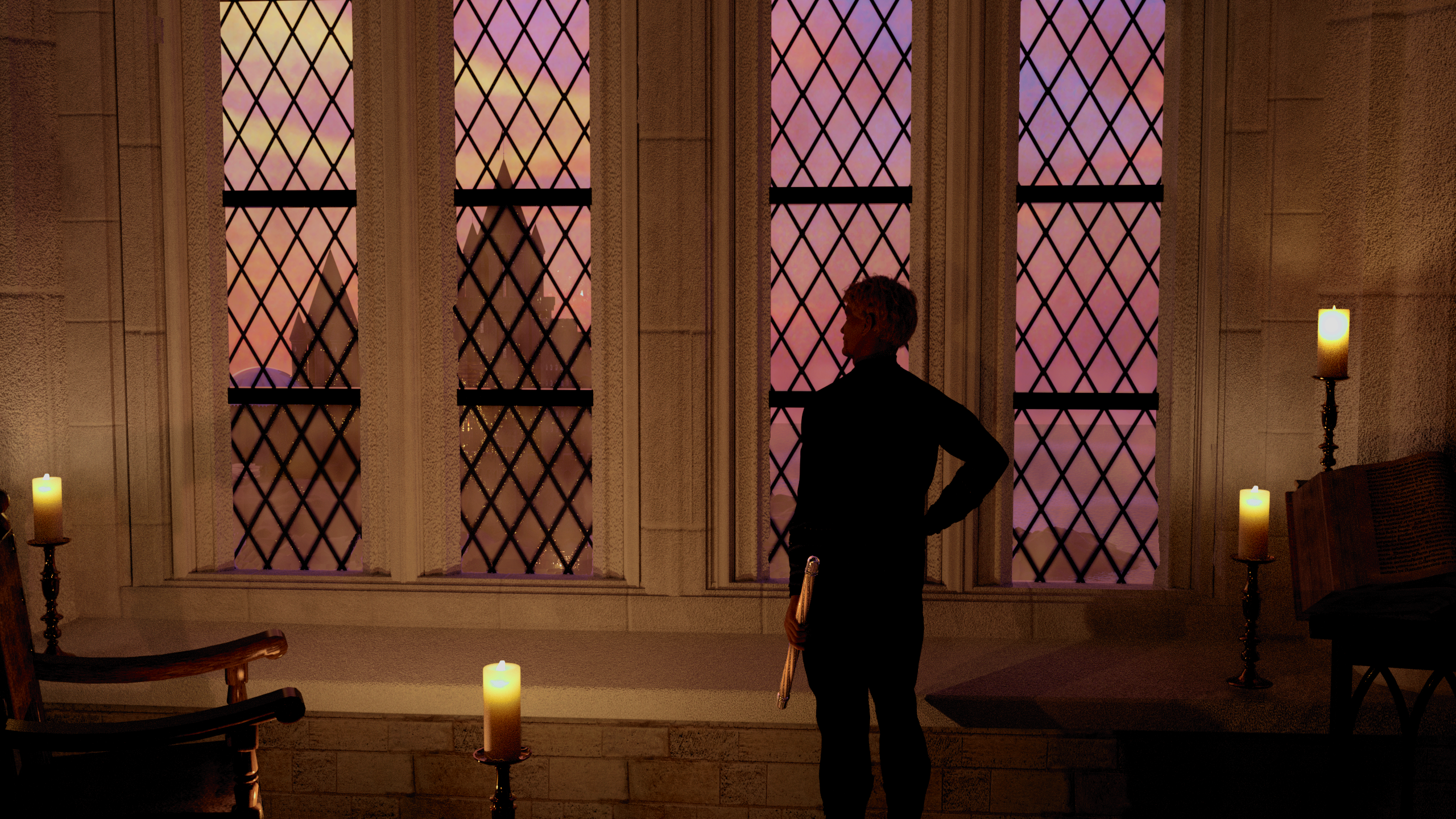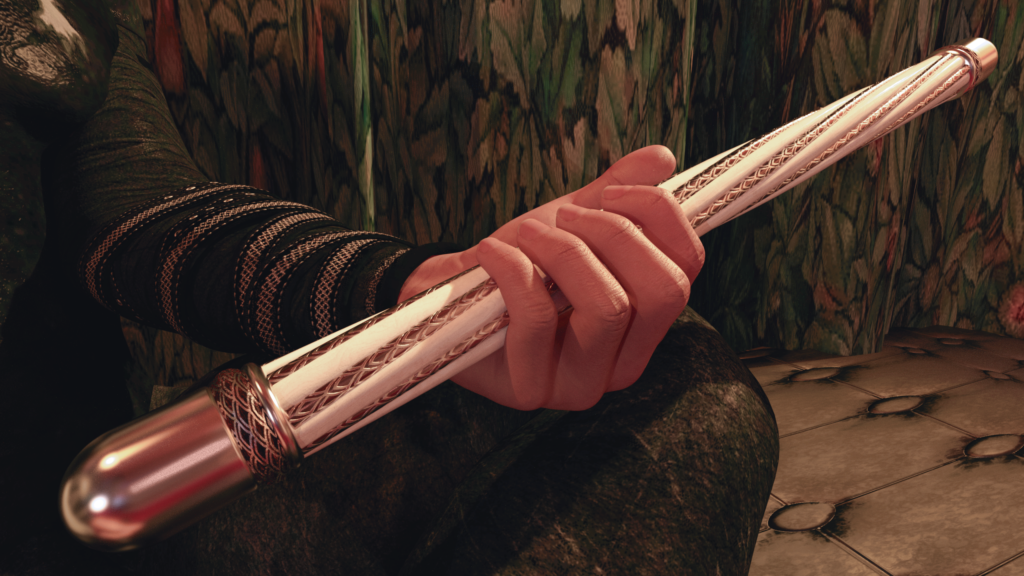Unique among the scepters of the Middle Kingdoms, the White Stave has no role in indicating the royalty of the one who holds it. Rather, what virtue it possesses derives from the royal.
The first White Stave was made from the wood of the tree under which Héalhra Whitemane rested for the last time in human form before taking Fire and immortality upon himself (along with the demigodhead of the Lion) to compass the destruction of the dreadful Gnorn and end the first Battle of Bluepeak. The lady Ambyr, Héalhra’s wife, brought a fallen bough of the tree away from the battlefield with her and kept it safe. When she and the people who would become the ancestors of the Arlene nation finally found their settling-place by the river Arlid, Ambyr had the straightest part of the bough wrought into a rod bound and capped with silver, as a sign and reminder of the Lion’s sacrifice to be borne by all the rulers of Arlen thereafter.
Over the centuries since, the Stave has worn out many times and been replaced without too much fuss when it does—the replacement coming whenever possible from the oldest scion of that first whitestave, Berlémetir Silverstock, which grows at the heart of the Orsmernin grove outside Prydon city. Woodworkers and jewelers tasked with making a new Stave try to duplicate the previous designs of the carving and the silver binding as closely as possible. But over the centuries various design tweaks have been made… these too without any great fuss.
The White Stave is more a badge of office than a symbol of royal power. By itself the Stave is far less important than the Throne of Arlen, which is carved of a single great crosscut of the same kind of wood (a variant of olive*, now routinely simply called “whitestave” wood right across the Kingdoms). Yet the Stave is almost always spoken of in the same breath as the Throne—as without being in possession of one of them, and able to sit safely in the other, no one can be said to truly rule Arlen. This is because their paired virtue derives solely from being in the keeping of a rightful ruler who has returned alive from the Nightwalk through Lionhall, bringing away with them the Lion’s countenance and His power.
In casual daily usage the ruler may or may not bring the Stave to formal functions such as court-justice, as they choose. The best-known exception to this rule is the Lion’s Days festival, during which the Stave must traditionally be borne to all a King’s, Queen’s or other-gendered Ruler’s** engagements. The Festival being what it is as regards eating and drinking (especially the drinking…), the Stave will routinely be mislaid at least once, with the Ruler being required to ransom it back from the subject who finds it. Sometimes this happens repeatedly, or on purpose, for a whole range of reasons that usually in short order become the matter of (popular) song in barbershops and winetaverns all across Prydon.
Beyond that, there is little or no protocol laid out for where the White Stave should spend its time. Some rulers rarely take it out of their quarters in Kynall Castle, leaving the thing on a bookshelf or buried somewhere under paperwork on a table for so long that they can’t remember where they put it, and the next ruler along has to go hunting through their predecessor’s personal effects to turn it up.
Others, having been missing the Stave for a while—sometimes a long while—always know exactly where it is even if they rarely produce it in public. And if they spend more private time in its company than most of their predecessors—that, surely, is between them and their great Father.

